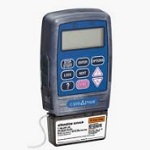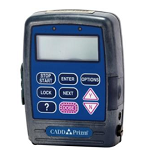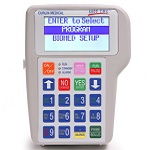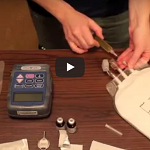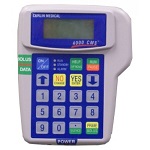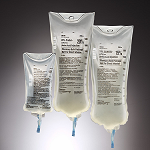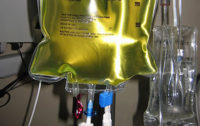
Instructions for Nutritional Support Therapies (TPN)
Nutrition support is the provision of nutrients via a tube placed into the stomach or small intestine, or intravenously for patients who are unable to eat adequately when provided a normal diet. These two types of nutrition support are called enteral nutrition and parenteral nutrition. Intravenous feeding is used when the digestive tract cannot adequately absorb nutrients, as occurs in severe malabsorption disorders. Food given intravenously can provide part of a person’s nutritional requirements (partial parenteral nutrition), supplementing the food eaten by mouth.
Select Instructions From the List Below
CADD PRIZM 6101 – TPN IV Setup
CADD PRIZM 6101 - TPN IV Setup The CADD-Prizm pump is indicated for intravenous, intra-arterial, subcutaneous, intraperitoneal, Read more...
CADD Prizm IV Pump Instructions
CADD® Ambulatory Infusion Systems, The CADD-Prizm® pump is indicated for intravenous, intra-arterial, subcutaneous, intraperitoneal, epidural space, or Read more...
Curlin pump TPN setup Instructions
CURLIN MEDICAL PUMP - TPN The Curlin Medical 6000. CMS Pump is considered as a multi-therapy infusion Read more...
How to prepare and administer TPN Instructions
TPN Administered TPN administration into a vein, generally through a PICC (peripherally inserted central catheter) Read more...
MOOG Medical, Curlin 4000 CMS IV Pump
MOOG Medical, Curlin 4000 CMS The 4000 Clinical Management System (CMS) is multi-therapy ambulatory electronic infusion pump Read more...
TPN Setup with IV pump Instructions
TPN stands for Total Parenteral Nutrition. Healthy individuals get their nutrition via the digestive tract, Read more...
MedExplains AI Content
Explain Nutritional Support Therapies (TPN) to homecare patients.
Nutritional Support Therapies (Total Parenteral Nutrition – TPN) Overview
What is TPN? Total Parenteral Nutrition (TPN) is a medical treatment that provides essential nutrients to patients who cannot eat or absorb food through their digestive system. TPN delivers nutrients directly into the bloodstream through a vein, usually via a central line, ensuring that the body receives the energy, proteins, vitamins, and minerals it needs to function properly.
Who Needs TPN? TPN is often used for patients who have conditions that impair their ability to digest or absorb food, such as:
- Severe gastrointestinal disorders (e.g., Crohn’s disease, short bowel syndrome)
- Cancer patients undergoing treatments that affect their appetite or digestion
- Patients recovering from surgery where the digestive system needs time to heal
- Chronic pancreatitis
- Severe malnutrition
Components of TPN TPN is a complex mixture of nutrients tailored to each patient’s specific needs. It typically includes:
- Carbohydrates: Mainly in the form of glucose to provide energy.
- Proteins: As amino acids to support tissue repair and muscle maintenance.
- Fats: Provided as lipids to give essential fatty acids and additional calories.
- Vitamins and Minerals: To prevent deficiencies and maintain metabolic balance.
- Electrolytes and Fluids: To maintain hydration and electrolyte balance.
How is TPN Administered? TPN is administered intravenously, meaning it bypasses the digestive system entirely. The process involves:
- Insertion of a Central Line: A catheter is inserted into a large vein, usually in the chest or arm, and secured in place.
- Preparation of TPN Solution: A pharmacist customizes the TPN solution based on the patient’s nutritional requirements.
- Infusion Process: The TPN solution is delivered through the central line using a pump, usually over 12 to 24 hours. The infusion can be done at home, allowing patients to maintain their daily routines.
Managing TPN at Home Patients or caregivers are trained on how to handle the TPN equipment, including:
- Setting up the infusion pump
- Monitoring for complications like infections or blockages
- Proper storage and handling of TPN solutions
- Recognizing signs of issues, such as fever or catheter problems, and knowing when to contact healthcare providers
Potential Complications While TPN is life-saving, it carries risks that patients and caregivers should be aware of:
- Infection: The central line is a potential entry point for bacteria, so strict hygiene is essential.
- Metabolic Imbalances: TPN can cause electrolyte imbalances, liver dysfunction, or blood sugar fluctuations.
- Catheter Issues: Blockages or dislodgement of the catheter can occur, requiring prompt attention.
Living with TPN Adjusting to life with TPN may require some changes, but with the right support, patients can continue to lead fulfilling lives. It’s important to:
- Stay in regular contact with your healthcare team
- Follow dietary and fluid intake guidelines provided by your doctor
- Be vigilant about maintaining the central line and managing your TPN schedule
By understanding the purpose and proper management of TPN, patients can effectively use this therapy to improve their health and quality of life while at home.
Select Instructions From the List Below
CADD PRIZM 6101 – TPN IV Setup
CADD PRIZM 6101 - TPN IV Setup The CADD-Prizm pump is indicated for intravenous, intra-arterial, subcutaneous, intraperitoneal, Read more...
CADD Prizm IV Pump Instructions
CADD® Ambulatory Infusion Systems, The CADD-Prizm® pump is indicated for intravenous, intra-arterial, subcutaneous, intraperitoneal, epidural space, or Read more...
Curlin pump TPN setup Instructions
CURLIN MEDICAL PUMP - TPN The Curlin Medical 6000. CMS Pump is considered as a multi-therapy infusion Read more...
How to prepare and administer TPN Instructions
TPN Administered TPN administration into a vein, generally through a PICC (peripherally inserted central catheter) Read more...
MOOG Medical, Curlin 4000 CMS IV Pump
MOOG Medical, Curlin 4000 CMS The 4000 Clinical Management System (CMS) is multi-therapy ambulatory electronic infusion pump Read more...
TPN Setup with IV pump Instructions
TPN stands for Total Parenteral Nutrition. Healthy individuals get their nutrition via the digestive tract, Read more...
